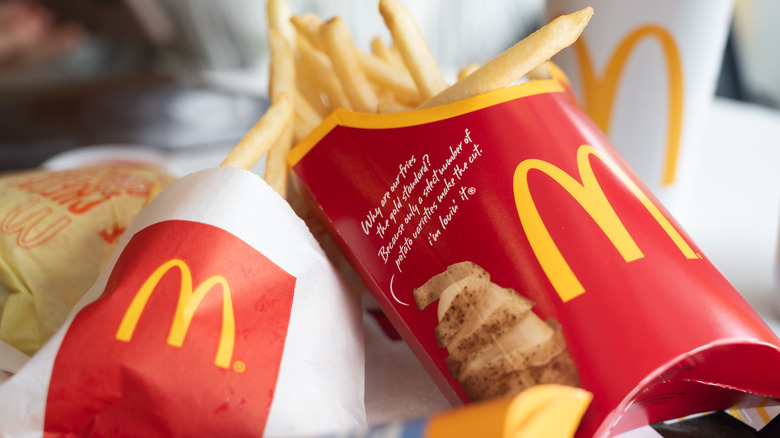Why Fast Food Chains Charge So Little To Upgrade Sizes
When you first walk into a Taco Bell or pull up to the McDonald's drive-thru, you may have every intention of ordering a small Baja Blast or a small fry. However, when you realize how much more product you could get by upgrading to a medium or large for mere pennies, it can seem wasteful to not go bigger.
With so many dining establishments actually decreasing their portion sizes in order to combat inflation, customers are left to wonder why fast food chains are offering huge amounts of food for a small price increase. Upsizing may seem like you are outsmarting major fast food chains but it's actually an intentional marketing strategy implemented by consumer psychologists.
Food is only a small part of the overall cost of running a restaurant, and offering bigger portions for a price that customers believe is a good deal will keep them coming back. However, cheaper labor costs and lower-quality items heavily contribute to fast food's ability to upgrade sizes. While fast food prices may seem low, if a restaurant like McDonald's sells a lot of cheap food, its margins remain good. By understanding the change in demand for a product relative to the change in price, chains can lower the price while still turning a profit. For example, if a fast food chain drops the price of a larger-sized item by 5% but sells 10-20% more meals this way, its profits will increase.
The money behind fast food marketing
Making you believe you're getting an unbelievable deal by upgrading at a fast food restaurant is all a part of multi-million-dollar marketing campaigns that get consumers to buy more of these products. McDonald's originally started to offer Supersizes of their meals even beyond size large as a summer promo in 1987 but it was so popular, and kept them competitive against other chains, that it stuck around. However, by 2004 the option to Supersize disappeared, but upgrading from small to medium or large remained very inexpensive.
The truth is, if a fast food chain is not making a sizable profit by offering inexpensive size upgrades, they will simply stop offering them. This seems to be what happened with the Supersize option at McDonald's. Walt Riker, a spokesperson for the chain, revealed in a 2004 statement (via CBS News), "The fact of the matter is not very many Supersize fries are sold." Understandably, the lack of sales disrupted the supply and demand necessary for such a deal while the demand for sizes medium and large is still high.
So, if you ever wonder why you're getting a steal on your fast food upsizes, remember that they are likely being offered because they continue to help the chain's bottom line.

